#haast’s eagle
Explore tagged Tumblr posts
Text
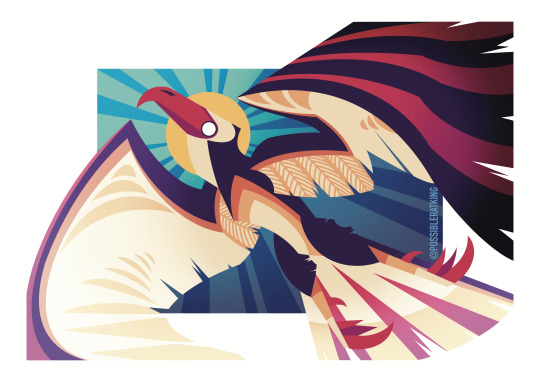
Another extinct New Zealand bird, this time the Haast’s Eagle
I love drawing birds
See ya ✌️
25 notes
·
View notes
Text
#2545 - Hieraaetus moorei - Haast's Eagle
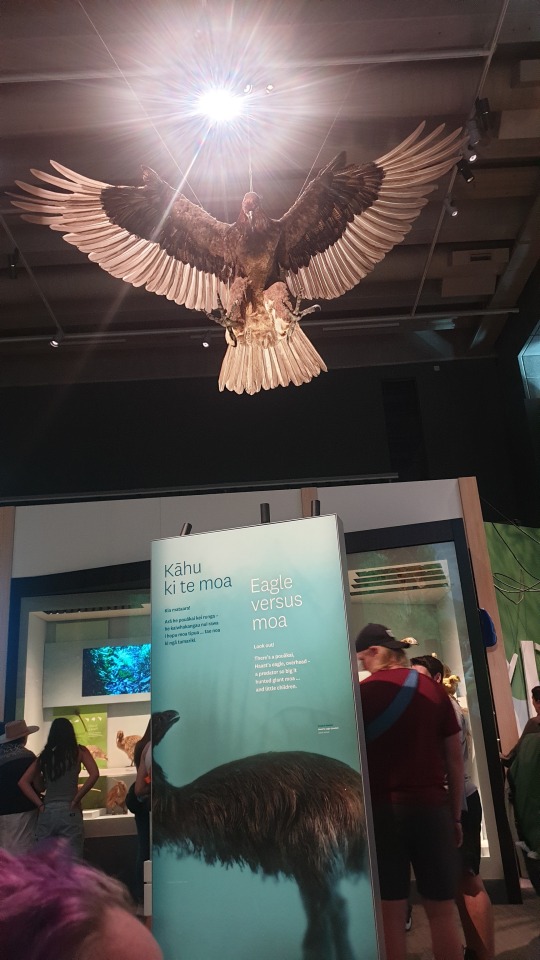
The largest eagle ever known to exist. Almost certainly the pouākai of Māori mythology. They certainly would have paid attention to it since it was big enough to consider humans as particularly stupid Moa who stood around in the open.
Here's some talon marks in a Moa hipbone.
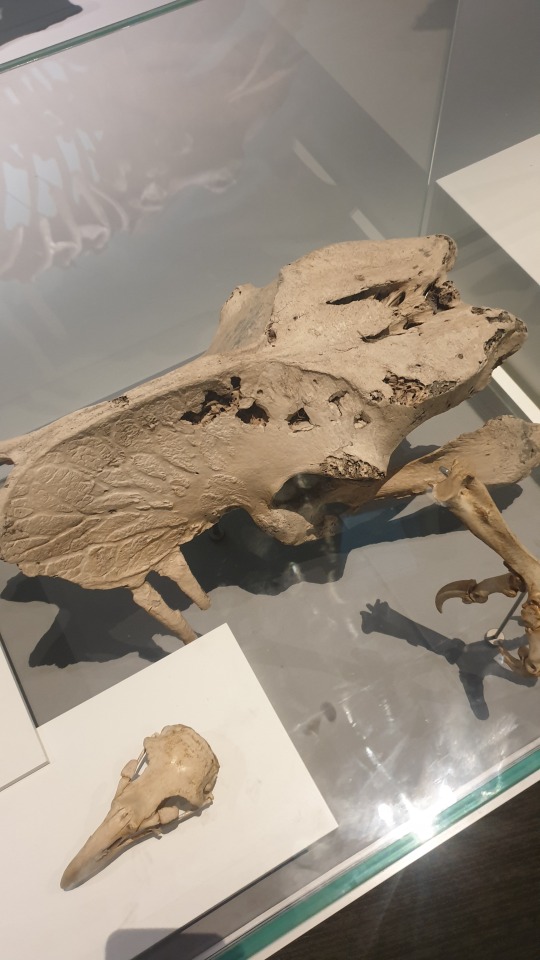
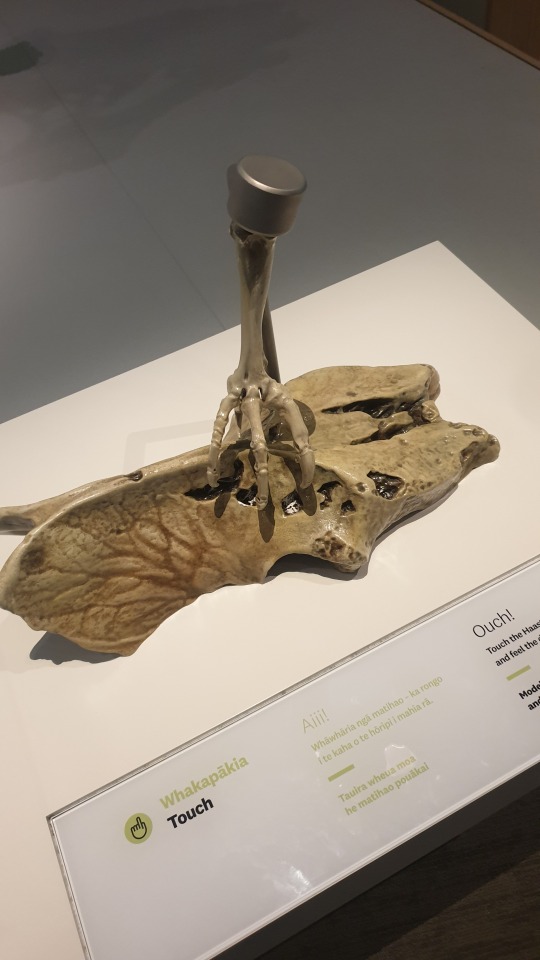
Originally described as Harpagornis moorei by Julius von Haast in 1871, from the Greek harpax, meaning "grappling hook". DNA analysis later showed that this bird was actually related to the much smaller little eagle (Hieraaetus morphnoides) and booted eagle (Hieraaetus pennatus) and not the large wedge-tailed eagle (Aquila audax) of Australia.
It probably evolved from the little eagle 1.8 million to 700,000 years ago, which means it increased ten to fifteen times in size - the largest, fastest evolutionary increase in average weight of any known vertebrate species. There were no other large predators in New Zealand, and an abundance of giant flightless prey.
It had a relatively short wingspan for a bird in its weight class. Females were estimated to span 2.6 m, possibly up to 3 m. It seems likely they pursued prey into dense forests, like the goshawks and harpy eagle.

The eagles most likely became extinct in the 1400s, after the Māori hunted their usual prey to extinction. Maori oral tradition about the birds persist to today, with late 1800s records saying it had red, black and white plumage with "black feathers tinged with yellow or green" and "a bunch of red feathers on its head".
Te Papa, Wellington, New Zealand.
#Hieraaetus#Harpagornis#haast's eagle#extinct species#new zealand bird#giant eagle#pouākai#te papa#wellington#Accipitridae
144 notes
·
View notes
Text
Time Travel Question 52: Medievalish and Earlier
These Questions are the result of suggestions a the previous iteration. This category may include suggestions made too late to fall into the correct earlier time grouping. In some cases a culture lasted a really long time and I grouped them by whether it was likely the later or earlier grouping made the most sense with the information I had.
Please add new suggestions below if you have them for future consideration. All cultures and time periods welcome.
We already did the burnings which lost their bracket, but the culture lasted a long time across a big area, and people keep suggesting it.
#Time Travel#Passenger Pigeons#Extinct Species#Birds#North American History#Natural History#Pleistocene#Aotearoa#Moa#Haast's Eagle#Indigenous History#Māori History#Māori Folklore#Māori#Silphium#Ancient World#Neolithic#Cucuteni–Trypillia Culture#Kazakhstan#Archaeology#Bronze Age#History of Disease#Fiber Art#neanderthal#homins#Early humans#History of Fashion
270 notes
·
View notes
Text


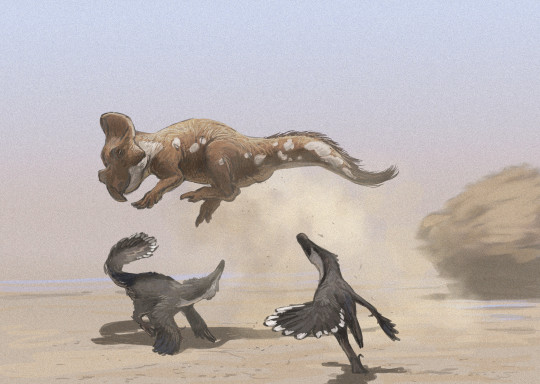
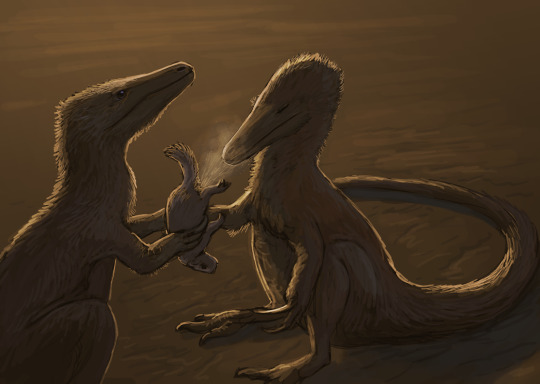
Results from the silly April's Fool #Paleostream
Hieraaetus moorei, Parvicursor (NOT THE BEES!), Bagaceratops (jumping over Shri) and Magallanodon (spraying a juvenile megaraptoran in the face)
#paleoart#sciart#alvaressaur#megaraptoran#bagaceratops#paleostream#palaeoblr#cretaceous#moa#haast's eagle#dinosaur
902 notes
·
View notes
Text

Cryptid of the Day: Haast’s Eagle
Description: Haast’s Eagle was one of the largest raptors that ever lived, but went extinct shorty after human arrival to New Zealand. European explorers claimed to have seen these birds, including Johann Haast. In 1961, noises from Stewart’s Island were thought to be calls of the bird
48 notes
·
View notes
Text
Avemetatarsalia: the group that includes Pterosaurs and Dinosaurs
As per usual, you have everything you need to care for the animal and are completely prepared. The animal will not eat you and will be your companion. Yes, even the Azhdarchids. If you can ride a T. rex into traffic, you can ride a Quetzalcoatlus into the clouds.
I had to extend beyond dinosaurs for this poll because, unfortunately, most flying birds aren't quite big enough, and also, I know we all want to ride pterosaurs.
Assume all options can hold your weight because I'm not sure any could and this is just for fun
#palaeoblr#polls#dinosaurs#pterosaurs#azhdarchids#pelagornis#argentavis#haast's eagle#quetzalcoatlus#hatzegopteryx#arambourgiania#tropeognathus#tupandactylus#barbaridactylus#pteranodon
233 notes
·
View notes
Text

Fossil Novembirb: Day 29
Two upland moas trekking the South Island Alps, while a haast's eagle soars above.
66 notes
·
View notes
Text
Giant statute of the extinct Haast's eagle (Harpagornis moorei) "greeting" travelers at Wellington airport.
200 notes
·
View notes
Text
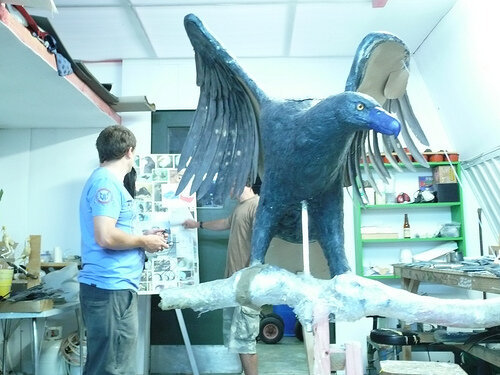
Do NOT time travel back to 13th century New Zealand.
#New Zealand#history#Haast's Eagle#Don't FUCK with this thing#time travel#bird#extinction#extinct animal#extinct animals
14 notes
·
View notes
Text

The Moa and Haast's Eagle as both sexually humanized babes. Moa's the tribal group of giant woman (standing 10 feet), and while Haast's the feminine warriors that hunted them while involved preyed slavery easily, both lived in the island's forests.
And even though unfortunately, just like their bird counterparts, they're so too as extinct in the 1400's.
Art © Me
#la-artist322#digital#digital art#fanart#sexy#thicc#thicc thighs#humanoids#humanized birds#humanized#babes#moa#haast's eagle#extinct#holocene
2 notes
·
View notes
Text
Australian fakemon: birds
Continuing with my fakemon region based on Australia and Aotearoa/New Zealand with some bird Pokemon. I'll admit, this region is primarily based on Australia with a bit of NZ, like how Paldea is primarily Spain but with a bit of Mexico and Brazil. This entry, however, is very New Zealandy. The islands of Aotearoa/New Zealand are very interesting in terms of biology as they are or were home to tons of unique birds. Prior to humans introducing dogs, rats, and the like, birds were the dominant vertebrates of the islands.
Previous posts: starters, more starters, misc 1, misc 2, and early-game standards
For my early-game bird line I took a bit of a challenge. I wanted to make an early-game normal/flying bird and make it interesting. I'll let you judge if I succeeded.
The first stage is Kakawiet, the Silent Pokemon, Normal-type. It is normal rather than normal/flying because it is flightless. Kakawiet are drab, flightless, and unable to make a single sound. While they live a boring existence, every Kakawiet dreams of being a performer and this dream urges them to grow strong and evolve. Kakawiet is based on the Kakapo, a flightless parrot from Aotearoa/NZ. Like the Kakapo, it is flightless and a drab green. Its name comes from "Kakapo" and "quiet"

Kakawiet evolves into Kakaphony, the Loud Pokemon, normal/flying type. Having evolves, Kakaphony is one step closer to achieving its dream of being a performer. It can fly, has become brightly colored, and can finally sing. Having just gained a voice, Kakaphony is not very good at singling, but insists on doing so loudly and frequently, much to the frustration of humans trying to sleep. The more they practice, they better they get and a Kakaphony that becomes good at singing will evolve. Kakaphomy is based on parakeets, more specifically, the Australian Budgerigar, which has become a popular pet. It also takes some inspiration from the elaborate decorations found on some birds of paradise, some species of which are found in Australia. Its name comes from "kakapo" and "cacophony".

The final stage is Orkakastra, the Performer Pokemon, normal/flying type. Only a few Kakaphony gain the skill at sing and dance needed to evolve. They are master auteurs, capable of making performances that can inspire even the most jaded of minds. To see an Orkakastra in action is a sight none will forget. Trainers need to learn to control their Orkakastras, as a poorly-trained one will often drop whatever it's doing when inspiration for a ner performance strikes it. Orkakastra is primarily based on cockatoos, which can be found through the Australasian region. It also has the color scheme of a rainbow lorikeet, a bird found in south Australia. Notably, the birds that inspired this design, the kakapo, parakeet, lorikeet, and cockatoo are all parrots. Orkakastra's head crest is based on the ones poosessed by cockatoos, but I also wanted it to look like the silhouette of the Sydney Opera House to add an extra layer of performing arts inspiration. Its name comes from "kakapo" and "orchestra". This line (at least the second two stages) would have an ability that increased the power of sound-based moves. Combined with STAB, this would let moves like Hyper Voice do great neutral damage and is the reason I made the line normal types.

If you're making Aotearoa/New Zealand Pokemon, how can you avoid doing a kiwi (bird) as a kiwi (fruit). Meet Hokakiwi, the Kiwi Pokemon, grass-type. While it looks like a bird, Hokakiwi is actually a large fruit. Legends say that somewhere deep in the forest is a tree that grows all Hokakiwi. Because many Pokemon enjoy the taste of Hokakiwi, they are shy and reclusive creatures that are rarely seen. The hard skin of the shell body protects them and they can withdraw their heads when in danger. I partially based Hokakiwi and its evolution on the Maori legend of how the kiwi lost its wings. In the story, the tree god Tane-Mahuta realizes that bugs are eating his trees so he asks the bird god Tane-Hokahoka (note that I found multiple names for these characters from multiple sources) to get a bird to eat the bugs. Tane-Hokahoka asks all the birds if they will give up their wings to live on the ground and eat bugs and only the Kiwi agrees to do it. Each stage in this evolution line uses the names of one of the gods. Hokakiwi comes from "Tane-Hokahoka" and "Kiwi". I considered making it a grass/rock or grass/ground type to reference England's Bulford kiwi chalk hill figure, but decided I need more mono-types.

Hokakiwi evolves to Moahuta, the moa Pokemon, grass-type. After evolving, Moahuta became so large and sturdy that most Pokemon can't hunt it. Free from the fear its previous stage had, Moahuta has become a prideful giant that strides through the land without fear. Its only predator is Poukakire (see below) and the sight or sound of one drives Moahuta into an intense panic that will cause it to drop its haughty attitude and do anything to escape. Moahuta is based on moas, giant flightless birds that once lived in Aotearoa/New Zealand until the first human inhabitants hunted them to extinction. Adult moas are believed to have had only one natural predator, the Haast's Eagle, which will come up again. While Hokakiwi was based on a kiwi fruit, Moahuta is based on a dragonfruit. This is mostly because I think dragonfruits look cool, but they have been imported to NZ as a crop. Moahuta's name comes from "moa" and "Tane-Mahuta". I see it being a defensive mon like Tangrowth.
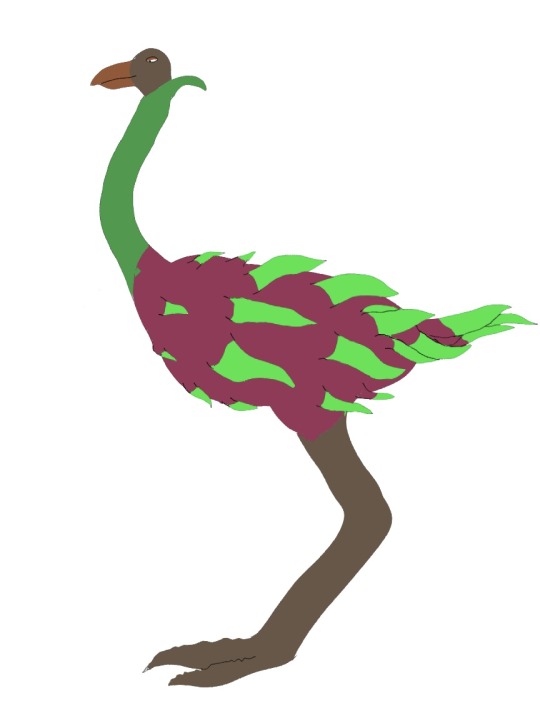
The final line starts with Snowai, the Snow Eaglet Pokemon, ice/flying type. Snowai need to be incubated in extremely cold temperatures so their nests are only found at the tops of tall mountains. After hatching, the mother will make each chick a snowball they they will live inside until evolution. Snowai are weak and ungainly and rarely leave their nests. Because of this, they are very rarely seen, but their cries echo across the mountains and can be heard miles away. People used to think the cries were omens of bad luck due to not knowing their origins. Snowai is based on a Haast's eagle chick. Haast's eagle is an extinct species of giant eagle from Aotearoa/New Zealand that hunted moas. They went extinct after the extinction of the moa destroyed their primary food source. Snowai is also based on the mythical hakawai, a bird who was never seen but its call could be heard and symbolized bad luck. Some anthropologists have suggested that the hakawai may be based on cultural memories of the Haast's eagle. Snowai's name comes from "snowball" and "hakawai".
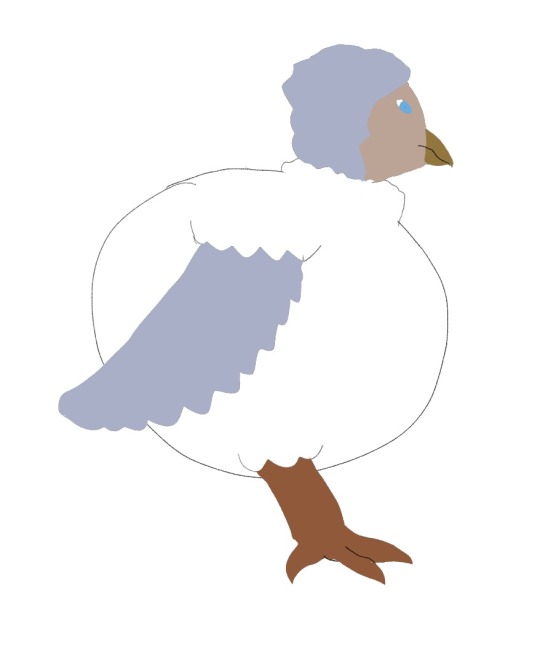
Snowai evolves to Poukakiri, the Ice Eagle Pokemon, ice/flying type. Masters of the skies of the Goorda Region, nothing on the ground is safe from a hunting Poukakiri, but their preferred prey is Moahuta. Poukakiri lives in the snowy mountains and only comes down to hunt, so they are rarely seen and many legends have grows of them descending from the sky and carrying off humans. It is said that if the air suddenly becomes colder, a Poukakiri is flying overhead and you should get inside to be safe. While fierce hunters, Poukakiri are also caring parents who dedicate themselves to raising their weak Snowai offspring until they can evolve and hunt on their own. Poukakiri is based on an adult Haast's eagle and the legendary poukai, a bird from Maori legend that would carry off humans to eat. The poukai is possibly based on cultural memories of the Haast's eagle, who could easily have killed a human if it wanted too. Poukakiri's name comes from "poukai" and "makakiri", a Maori word for "cold" or "winter". I view this line as being akin to Magikarp in that you have to raise a weak first stage to evolve it into a powerful second stage.
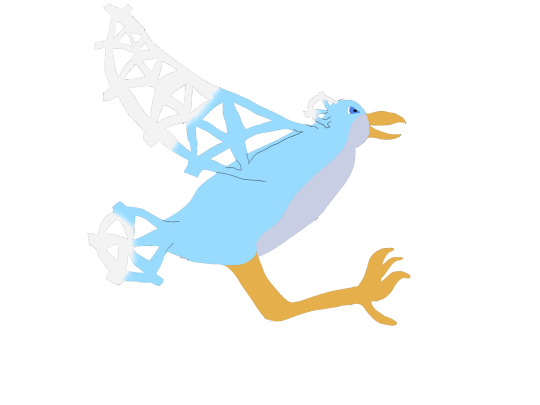
#pokemon#fakemon#australia#aotearoa#new zealand#bird#birds#kakapo#budgie#parakeet#rainbow lorikeet#cockatoo#kiwi#moa#haast's eagle#eagle#maori mythology#art#novice artist#new artist
11 notes
·
View notes
Text
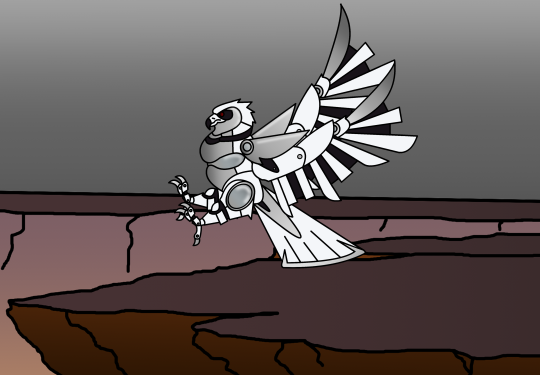
The Haast's Eagle Zord, piloted by Alban Sterling, the white ranger of the Primal Vigil Rangers.
#dcdrawsstuff#dcblogsshit#art#personal art#mech design#haast's eagle#white ranger#power rangers#fan project#primal vigil
4 notes
·
View notes
Text

really really funny + weird that if you google haast eagle the first image result is a lord of the rings promo eagle, with Gandalf on top. this is in one of our main aotearoa airports. (+ has been there since the hobbit movies in like 2013). this is not a haast eagle. you can even see Gandalf on the back in this picture.
17 notes
·
View notes
Text


Chicklutch have intensely muscled legs that allow them to exert a ridiculous level of pressure with their talons. Because of their excessive muscle they aren't the most maneuvreable fliers, preferring to surprise prey before overwhelming them with raw strength. Haastalon have developed their legs to the point they can function equally well as a pair of arms, not only possessing a horrifying grip strength but capable of delivering mighty blows. Experts at hunting prey much larger than themselves, if the initial impact doesn't finish prey off, their formidable talons surely will. --Attack Info-- --Ability Info--
3 notes
·
View notes


